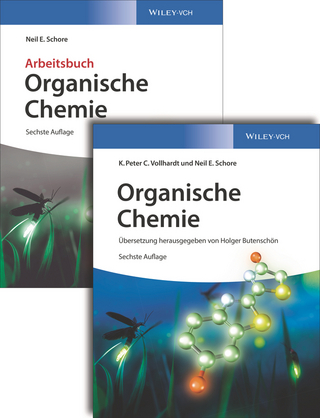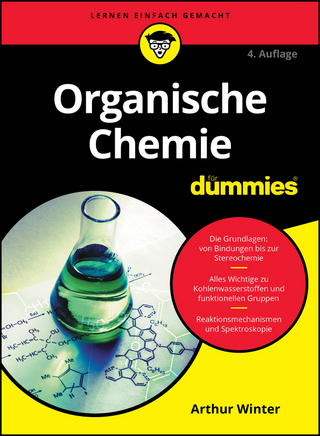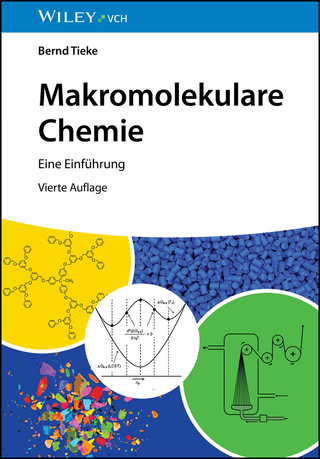
The Origins and Early History of Conjugated Organic Polymers
Organic Semiconductors, Synthetic Metals, and the Prehistory of Organic Electronics
Seiten
2025
Oxford University Press Inc (Verlag)
978-0-19-763816-3 (ISBN)
Oxford University Press Inc (Verlag)
978-0-19-763816-3 (ISBN)
- Noch nicht erschienen (ca. August 2025)
- Versandkostenfrei innerhalb Deutschlands
- Auch auf Rechnung
- Verfügbarkeit in der Filiale vor Ort prüfen
- Artikel merken
Using a range of examples of conducting polymers from the early 19th century onwards, this book shows that the history of conjugated organic polymers begins before the late 1970s, thus rethinking the accepted historical narrative and providing new insights.
Conjugated organic polymers first drew significant interest in the late 1970s when metallic-looking plastic films of polyacetylene were shown to exhibit conductivities in the metallic regime after treatment with various oxidizing agents. These results formed the basis for awarding Alan MacDiarmid, Alan Heeger, and Hideki Shirakawa the 2000 Nobel Prize in Chemistry for the "for the discovery and development of electrically conductive polymers." However, reports of electrically conductive polymers date back to the early 1960s, with the study of conjugated polymers as a whole dating back to the early 19th century.
The Origins and Early History of Conjugated Organic Polymers rethinks the accepted historical narrative of conjugated organic polymers, challenges the established interpretations, and provides new insights into these fascinating electronic materials. Using a range of reader-friendly figures, tables, and illustrations, this book charts the history of the first six primary parent polymers, beginning with the introduction of polyaniline in 1834 and continuing up through the development of polythiophenes and low bandgap polymers in the 1980s.
Thought-provoking and original, The Origins and Early History of Conjugated Organic Polymers presents an authoritative history of the primary conjugated organic materials that now make up the foundations of a significant field of science and technology.
Conjugated organic polymers first drew significant interest in the late 1970s when metallic-looking plastic films of polyacetylene were shown to exhibit conductivities in the metallic regime after treatment with various oxidizing agents. These results formed the basis for awarding Alan MacDiarmid, Alan Heeger, and Hideki Shirakawa the 2000 Nobel Prize in Chemistry for the "for the discovery and development of electrically conductive polymers." However, reports of electrically conductive polymers date back to the early 1960s, with the study of conjugated polymers as a whole dating back to the early 19th century.
The Origins and Early History of Conjugated Organic Polymers rethinks the accepted historical narrative of conjugated organic polymers, challenges the established interpretations, and provides new insights into these fascinating electronic materials. Using a range of reader-friendly figures, tables, and illustrations, this book charts the history of the first six primary parent polymers, beginning with the introduction of polyaniline in 1834 and continuing up through the development of polythiophenes and low bandgap polymers in the 1980s.
Thought-provoking and original, The Origins and Early History of Conjugated Organic Polymers presents an authoritative history of the primary conjugated organic materials that now make up the foundations of a significant field of science and technology.
A native of the Seattle area, Seth C. Rasmussen received his B.S in 1990 (Chemistry, Washington State University) and his Ph.D. in 1994 (Inorganic Chemistry, Clemson University). Moving to the University of Oregon as a postdoctoral associate, he then accepted a teaching position there in 1997. Joining the faculty at North Dakota State University in 1999, he attained the rank of full professor in 2012. Active in both materials chemistry and the history of chemistry, he was named a Fellow of the American Chemical Society in 2021 and a Fellow of the Royal Society of Chemistry in 2022.
| Erscheinungsdatum | 05.08.2023 |
|---|---|
| Zusatzinfo | 153 |
| Verlagsort | New York |
| Sprache | englisch |
| Maße | 156 x 235 mm |
| Themenwelt | Naturwissenschaften ► Chemie ► Organische Chemie |
| Sozialwissenschaften ► Pädagogik | |
| ISBN-10 | 0-19-763816-3 / 0197638163 |
| ISBN-13 | 978-0-19-763816-3 / 9780197638163 |
| Zustand | Neuware |
| Informationen gemäß Produktsicherheitsverordnung (GPSR) | |
| Haben Sie eine Frage zum Produkt? |
Mehr entdecken
aus dem Bereich
aus dem Bereich


